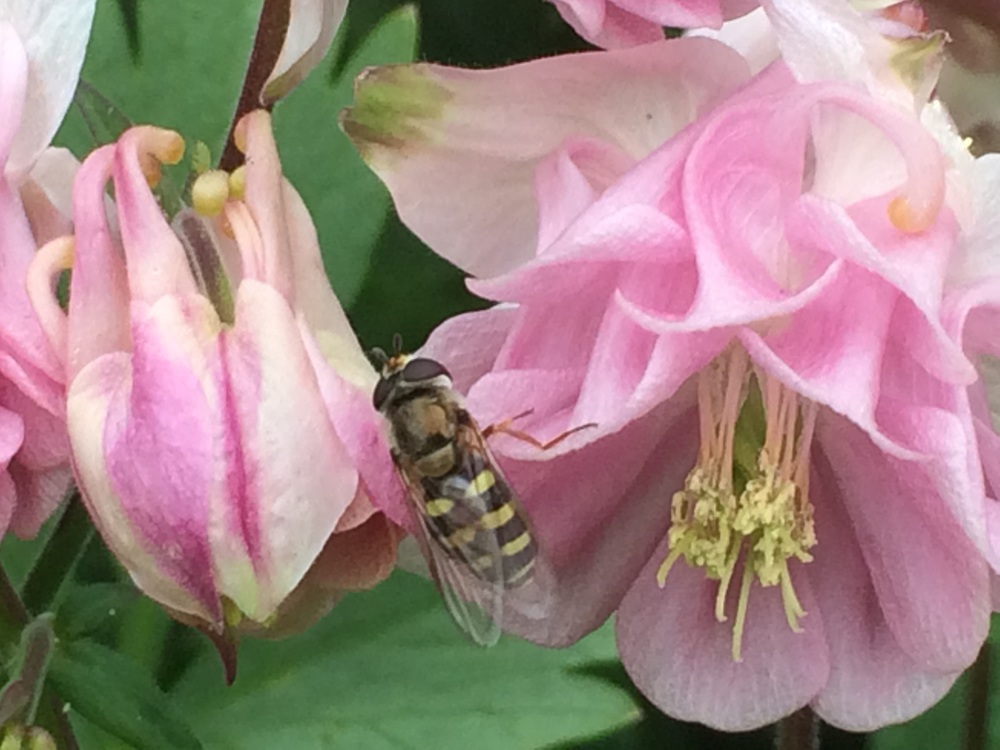Rooting for the Underdogs of the Pollination World
As pollinating insects, bees get all the credit – but they don’t do all the work.

A bee-mimicking syrphid fly
Washington State University doctoral student Rachel Olsson noticed that a couple of years ago, as a lab technician charged with sampling bee biodiversity on two dozen Western Washington organic farms.
“I started to notice the other insects, too,” she said. “I was seeing a lot more insects visiting flowers than just bees, and I started feeling for these unsung heroes of the pollination world.”
But Olsson did more than just notice. She asked the questions: What else might be pollinating crops and did these other insects provide any other services for farms?
“I asked the questions in my lab, and Dr. David Crowder told me I should do it more formally,” she said. “I was invited to apply for a graduate student position, and then encouraged to apply for a grant from the Western Sustainable Agriculture Research and Education program.”
Olsson got the Western SARE graduate student grant, and spent the next couple of years answering her own questions.
“The biggest question was, ‘What is here?’” she said. “What insects are visiting flowers? So we looked at all the visits of bees and non-bees in several different crops on these farms, including cucumbers, sunflower, tomatoes and buttercup to sample a weedy species.”
The result?
About a third of the insects visiting and potentially helping pollinate these crops’ flowers were non-bee species, primarily flies. Of those, most were syrphid flies, also known as hover flies, many of which are bee mimics and do more than pollinate plants.
“As juveniles, they are predators of aphids, which can be important pests on farms,” she said. “So by recognizing the importance and providing habitat for these flies, growers can bolster their pest management and potentially their pollination at the same time.”
Olsson has shared her findings at conferences and webinars, citizen-science workshops and through the lab’s “What’s the Buzz?” website and podcasts (at whatsthebuzzresearch.com).
“It was pretty cool,” she said. “It supported my gut feeling of rooting for the underdogs.”
Olsson hoped to also document bee and non-bee interactions during her research, but found that the crops they had chosen tended to draw one type of pollinator or the other.
She co-authored “A Citizen Science Guide to Wild Bees and Floral Visitors inWestern Washington,” and is now looking at ways to support bumble bees in Eastern Washington canola fields. She’s scheduled to receive her doctorate in 2020.